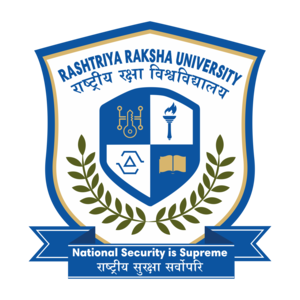
Delving within the Constitution in the wake of Covid-19
DELVING WITHIN THE CONSTITUTION IN THE WAKE OF COVID-19
- Mohd Suboor
Since the current legislations have failed to tackle the outspread of the pandemic, it is the need of the hour to delineate the constitutional mandates,to take more drastic measures and hence lay down an effective machinery. Besides the absence of a well framed recent statute to govern the widespread of such pandemic disease, another problem giving a setback to the country is the inability of the central government to impose laws regarding healthcare, owing to the federal structure of India and the fact that the ‘public health’ entry is listed under the State List in the seventh schedule of the Constitution. This makes us to rethink and explore the emergency provisions in our constitution.
The part XVIII of the Indian constitution discusses the emergency provisions, as well as the conditions in which they can be invoked, and the manner required to effectively implement them. On a closer look at the document, we see that there are various provisions for the emergency powers to be exercised, all of it is discussed in detail from Article 352 to Article 360.
In the wake of COVID-19, while drawing an assessment over the scope of a national emergency (under Article 352), it can be concluded that, an emergency under this article could be invoked on the ground of war, external disturbance and internal disturbance originally. However, with the passing of the 44th constitutional amendment, the term ‘internal disturbance’ was replaced by the new term ‘armed rebellion’. Subsequently, making itoutside the scope of interpretation to include an epidemic in its ambit.
INVESTIGATING INTO ARTICLE 355
With the passing of the amendment, no such change was made in article 355 of our constitution, which puts forth a duty over the central government to protect all states in case of external aggression and internal disturbance. The article contemplates that, ‘It shall be the duty of the Union to protect every State against external aggression and internal disturbance and to ensure that the government of every State is carried on in accordance with the provisions of this Constitution’. Going through this article, we observe that the applicability of the term internal disturbance is valid in its ambit. The term ‘internal disturbance’ is open to interpretation and has a much wider scope. The flexibility of the term is one of its merits and due to this reason, the
drafters of our constitution under the provisions for emergency, provide the Central Government with some overruling powers by casting a duty upon the centre to protect the states. The idea is to act in unison and to handle the problem, this could be done only when the fragmentation of power is less and more power is vested with the central government to take quick as well as efficient measures.[1]
The Sarkaria Commission Report, has laid down some references to the constitution in connection to the emergency provisions. The Report also stated that, the term ‘internal disturbances’ has a broad scope and an internal disturbance can be Nature-made, also. Natural calamities of unprecedented magnitude, such as flood, cyclone, earth-quake, epidemic, etc. may paralyze the government of the State and put its security in jeopardy.
“Under Article 355, a whole range of action on the part of the Union is possible depending on the circumstances of the case, the nature, the timing and the gravity of the internal disturbance.”
In extension to this, the report states “The Constitution-framers conceived these provisions as more than a mere grant of overriding powers to the Union over the States. They regarded them as a bulwark of the Constitution, an ultimate assurance of maintaining or restoring representative government in States responsible to the people. They expected that these extraordinary provisions would be called into operation rarely, in extreme cases, as a last resort when all alternative correctives fail.”[2]
Forming a nexus between this report and article 355, it can be clearly stated that the scope of the article has far reaching measures and it can be implemented for the better control of the situation.
Discussing the effect of proclamation of an emergency, Article 353 comes into play clearly stating, that during an emergency, Article 353, permits the Central government to direct any state on how to use its executive power as well as it permits the parliament to, even make the laws on matters which are in the State List. Consequently, providing superseding powers to the central government in this case. In addition to this, Article 358 suspends Article 19 during the time of emergency and Article 359 suspends the whole part III of the constitution, i.e. Fundamental Rights.[3]
EXPLORING ARTICLE 356 i.e. STATE EMERGENCY
As stated in the constitution, article 356 defines the provision in case of failure of the constitutional machinery in states. Now as the title of this article implies, the emergency under this article can only be imposed if there is a breakdown of the constitutional machinery in the state. In addition to this, the Sarkaria Commission report mentions certain grounds stating the breakdown of constitutional machinery, namely:
(a) Political crisis.
(b) Internal subversion.
(c) Physical break-down.
(d) Non-compliance with constitutional directions of the Union Executive.
Scrutinizing the whole report, it further furnishes the grounds under which a physical breakdown can be considered. Following are some instances of physical breakdown as per the report:
(i) Where a Ministry, although properly constituted, either refuses to discharge its responsibilities to deal with a situation of \'internal disturbance\', or is unable to deal with a situation which paralyses the administration, and endangers the security of the State.
(ii) Where a natural calamity such as an earthquake, cyclone, epidemic, flood, etc. of an unprecedented magnitude and severity, completely paralyses the administration and endangers the security of the State and the State Government is unwilling or unable to exercise its governmental power to relieve it.
The report clearly states the term epidemic as one of the possible grounds for physical breakdown. It further widens the scope of this article in relation to the declaration of an emergency to control the epidemic. Therefore, a public panic situation and mass lawlessness endangering the security of the state triggered by the outbreak of COVID-19 could easily be addressed under the umbrella of a state emergency.
CONCLUSION
The implementation of an Emergency could even prove to be an asset during such an outburst of an epidemic disease, as this provides further authority and power to the government to take stricter actions. This could help the country in a short run to tackle with the problem of COVID-19, but there is no doubt about it that in the long run the country will have to bring an effective legislation to deal with the problems such as an epidemic or any other nature made disaster as well.
However, the powers shouldn’t be a carte blanche, and instead it ought to be followed in good faith as well as in a reasonable manner. This could help to handle the current situation in an effective manner, or else it could turn out be hazardous, hence affecting the social, political and economic condition of the country. Therefore, taking it beyond repair.
REFERENCES
[1] Srishti Ojha, ‘Can a pandemic ‘COVID19’ be a ground to declare Health Emergency?’ (24th March 2020)<https://www.indialegallive.com/top-news-of-the-day/news/can-pandemic-covid19-ground-declare-health-emergency-93407> accessed 5 April 2020.
[2] ‘wp-content/uploads/2015/06/CHAPTERVI.pdf’
<http://interstatecouncil.nic.in/wp-content/uploads/2015/06/CHAPTERVI.pdf> accessed 5 April 2020.
[3] Sanjoy Ghose and RhishabhJetley, ‘Does the Constitution Allow Modi to Declare a National Emergency Over COVID-19?’ <https://thewire.in/law/can-an-1897-law-empower-the-modern-indian-state-to-do-whats-needed-to-fight-an-epidemic> accessed 4 April 2020.












